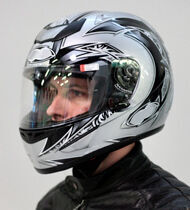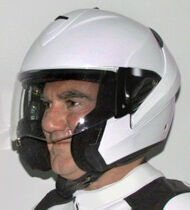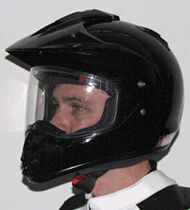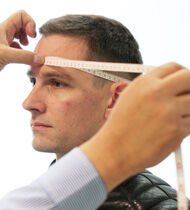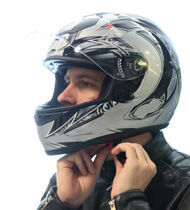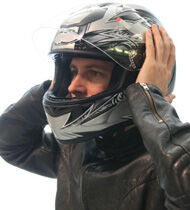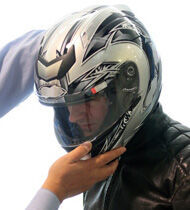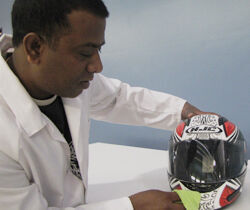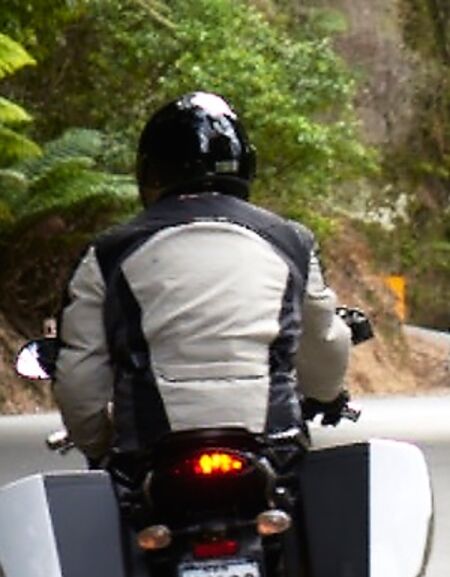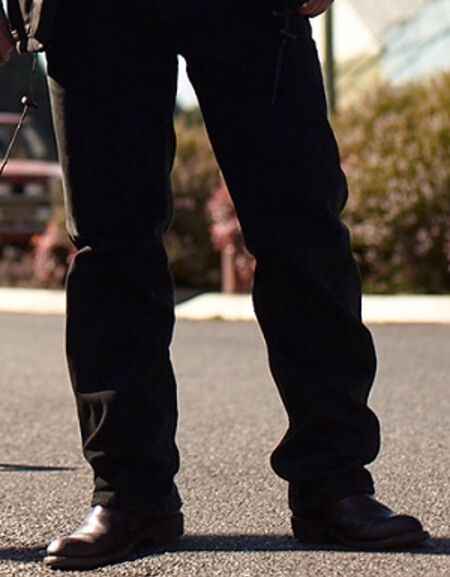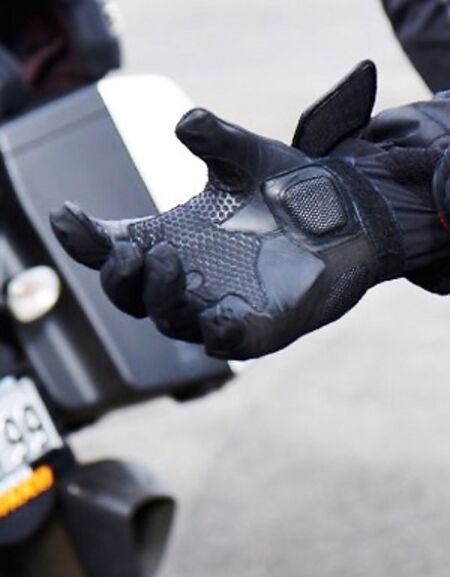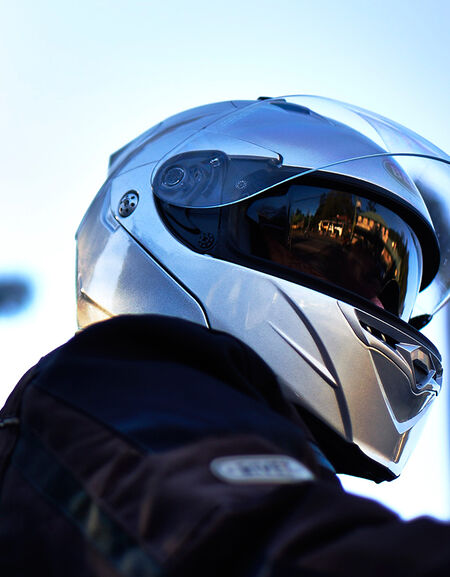
Overview
Motorcycle riders must wear a properly fitted and approved motorcycle helmet. Follow the guidelines below to ensure that you choose the safest helmet for you and know how to use it correctly.
- Consider the protection and comfort ratings provided in this website when selecting a new helmet to suit your riding style. All helmets rated by CRASH are certified to either AS/NZ 1698 and/or UNECE 22.
- Choose a light-coloured helmet. A lighter coloured helmet offers better visibility to other vehicle drivers both during the day and at night.
- You should not purchase a second-hand helmet, as it may have been involved in a crash or have experienced UV degradation, nor should you lend your helmet to others, as it can affect how the helmet fits your head when returned. There may be little external evidence that a motorcycle helmet has received a very forceful impact.
- Remember, helmets are produced in a range of sizes to satisfy a mass market. Your head shape and size are unique to you, so take the time to follow the steps outlined in Helmet Fit section when purchasing your new helmet.
- Helmets should be disposed of carefully to avoid re-use. It is recommended that the straps are cut off, or the helmet is cut in half before disposal.
Types of Helmets
Full face helmets
Full face helmets cover the entire skull and have a protective section over the front of the chin. Such helmets usually come with a visor that generally swivels up and down to allow access to the face. Many full face helmets include vents to increase the airflow to the rider's head.
Open face helmets
Open face helmets have a rear that covers the back of the head, but lack the lower chin-bar of the full face helmet, and do not necessarily include a visor. An open face helmet provides the same skull protection as a full face helmet, but less protection to the face and chin areas. Helmets without visors allows insects, dust and wind to impact the face and eyes, which may cause rider discomfort or injury unless used with goggles.
Flip-up helmets
Flip-up helmets are a hybrid between full face and open face helmets. They are also sometimes termed "convertible" or "flip-face" helmets. When fully assembled and closed, they resemble full face helmets by incorporating a chin-bar for absorbing frontal impacts. The chin bar usually pivots upwards to allow access to most of the face, as in an open face helmet.
Dual purpose helmets
Dual purpose helmets are a hybrid of on-road and off-road helmets. They have clearly elongated chin and visor portions, a chin bar and a partially open face to give the rider extra protection while wearing goggles and to allow the unhindered flow of air necessary during this type of riding. The visor allows the rider to dip their head and provides further protection from flying debris during off road riding.
Helmet Fit
Wearing the wrong size helmet can increase your risk of serious injury or death in a crash. A helmet that is too large for your head may be dislodged or knocked off in a crash. To select a helmet that correctly fits your head, follow these instructions:
-
Have your head size measured before you try on a helmet. Measure around the largest part of your head just above the ears, taking the measurement at the forehead. The measurement will correspond to a particular size in the model range you are interested in. This is a good starting point. If you want a particular brand or model, do not be tempted to go for another size if yours is out of stock – wait and get the correct size.
Refer to table below to convert head circumference to helmet size (please note this is a guide only).
Head Circumference (cm) Size 51 – 52 XXS 53 – 54 XS 55 – 56 S 57 – 58 M 59 – 60 L 61 – 62 XL 63 – 64 XXL -
Once you have the helmet in the recommended size, place it firmly onto your head and secure the chin-strap. If the helmet has a quick release buckle, take the time to adjust the strap. Once fitted, you should be able to feel the inside of the helmet against all parts of your head. Once you are happy, wear the helmet for a few minutes to make sure it is comfortable.
-
Try to rotate the helmet from side to side with the strap secured. Make sure the helmet does not rotate on your head. The cheek-pads should provide a firm, comfortable fit. Next, tilt the helmet forward and back. It should stay in position and not move. If it slips forward or backwards it is the wrong size and you will need to choose a different helmet.
-
Finally, check that the helmet won't come off easily in a crash. Tilt your head forward and have someone try to roll the helmet off your head by carefully applying an upward force to the rear of the helmet at its base. If it can be rolled off in the showroom with the chin-strap done up, it will most likely come off in a crash.
Helmet Care
Your helmet is the most important piece of safety protection you need when riding a motorcycle. You never know when your motorcycle helmet may be called upon, so it makes sense to look after it. A motorcycle helmet generally has a life of around five years; or three years if used regularly. To get the most protection out of your motorcycle helmet, you need to keep it in the best possible condition throughout its life.
It is recommended that you always follow the manufacturer's cleaning instructions for the specific helmet you've purchased. If you only occasionally use your helmet it is recommended to store it safely in a helmet bag, in a location where it cannot be dropped. A helmet should be stored with the chin strap facing down on a hard surface. It should also be kept away from harsh cleaning chemicals, petroleum-based solvents, prolonged exposure to sunlight or excessive heat. These factors can speed up the degradation of helmet materials, even though the damage may not be apparent visually.
Choose the right gear for your ride
Compare safety and comfort ratings

